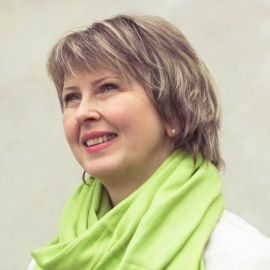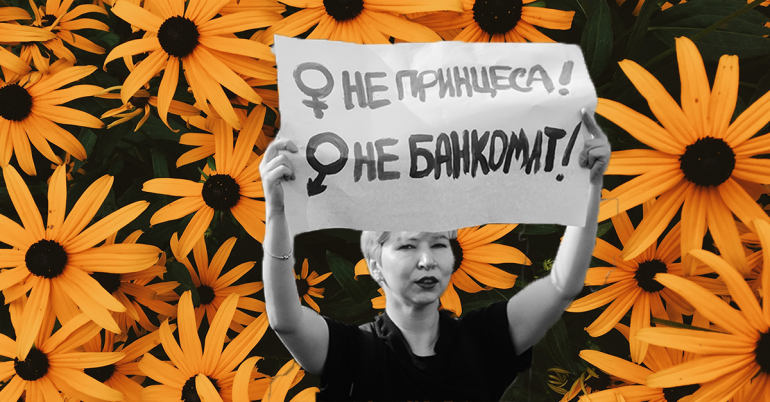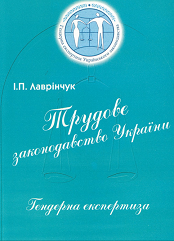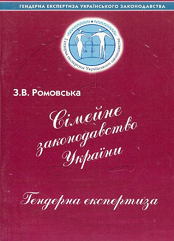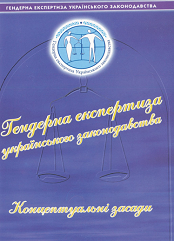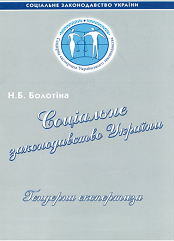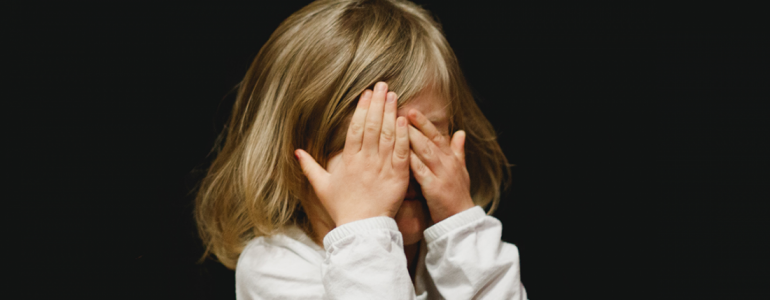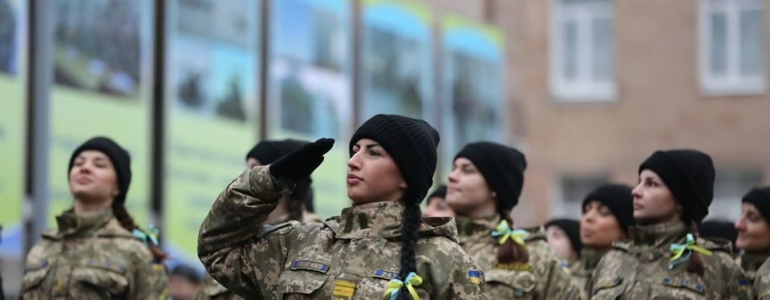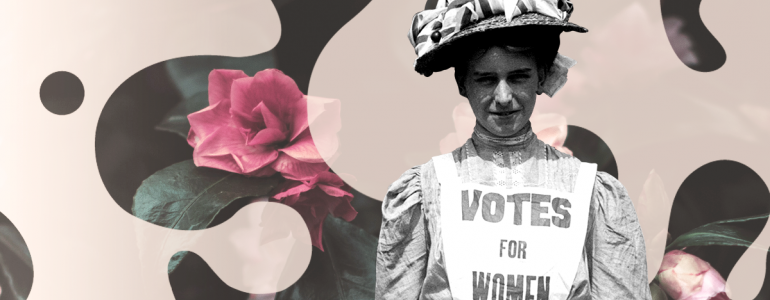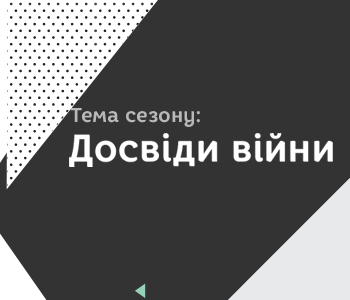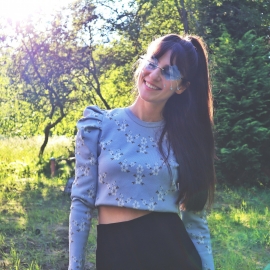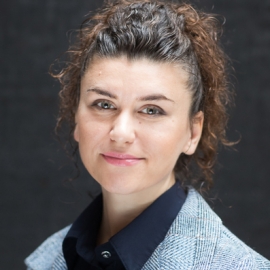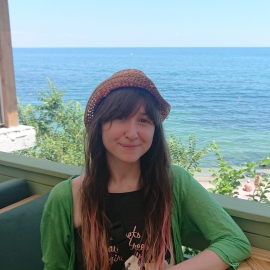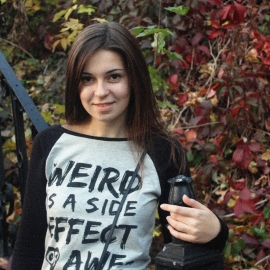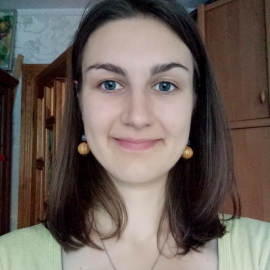Translated from Ukrainian by Iryna Malishevska.
VIA SIDE STREETS TO A BRIGHTER FUTURE: THE STATE AND WOMEN’S MOVEMENTS IN POST-SOVIET UKRAINE
The trajectory of how the women’s movement developed was somewhat different from that of gender studies. The pre-Soviet women's NGOs started their revival and new ones had been founded in Ukraine already during the period of ‘perestroika’ in the late 1980s and became widespread in the early 1990s. The newly established women's NGOs were desperately looking for an ideological basis for their activities, but nationalism was much more popular than feminism at that time.
Activism of Mothers and the Image of Berehynia
In Ukraine, for a woman to be heard and to be respected in society was to speak from the position of a mother who defended her children’s interests. This was the strategy of the first post-Soviet women's organisations (Committees of Soldiers' Mothers, Mama-86, Unions of Mothers of Many Children, etc.). The social focus and demands of these groups were shared by a wide audience. Although at the time there was no discussion about discrimination of women or gender equality, the very fact that women were publicly active allowed the nascent activists to gain experience of organised public activities and helped normalisation. As Alexandra Hrycak stated, “when publicity first allowed female social activists to participate in independent public events, they used the discourse of motherhood to construct a ‘motherly’ shape of collective action in order to make new political demands”[1].
Nationally oriented organisations (the Union of Ukrainian Women, the Women's Community, the Women's Association of Olena Teliha, and others) carried on the traditions of the pre-Soviet women's movement and focused their efforts on the uprisal of national culture and the building of an independent state[2]. These organisations declared their mission to revive the traditional values of Ukrainian culture and promoted the idea of the centuries-old matriarchal Ukrainian society, embodied by Berehynia, an archetypical protectress. The image of the patron goddess of women and the family hearth, created in those years, was presented to the public as an authentic ideal of Ukrainian femininity.
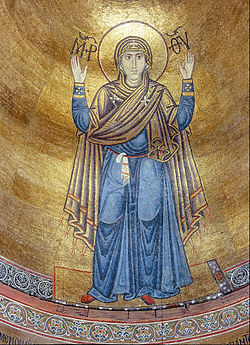

Typical image of a berehynia
Not only did these traditionalist NGOs defend the right and duty of every woman to be such Berehynia, but they extrapolated her functions from the private sphere to the public and political sphere, and therefore encouraged women to take care of their big family-like nation and their big homeland Ukraine as a mother and home keeper would[3]. Protection of women's own interests and rights remained on the margins of the activities of the largest and most powerful women's organisations until the mid-1990s.
The World Conference on Women in Beijing as a Catalyst for Understanding Gender Discrimination
Discrimination was first discussed during preparations for the Fourth World Conference on Women in Beijing in 1995. Ukraine was to report on the implementation of the Convention on the Elimination of All Forms of Discrimination against Women. Human rights activists, academics, representatives of government bodies, and women's NGOs were mobilised around this document. The results of wide-scale studies documenting discrimination against women in various fields were made public during parliamentary proceedings in 1995[4]. The outcome documents of the Fourth World Conference on Women, the Beijing Declaration and Platform for Action, became the road map for women's NGOs for the next decade.
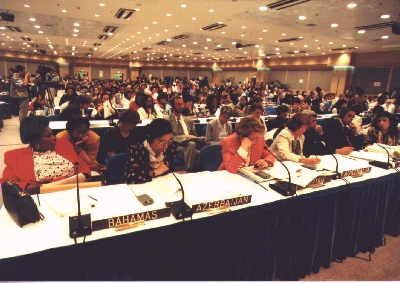
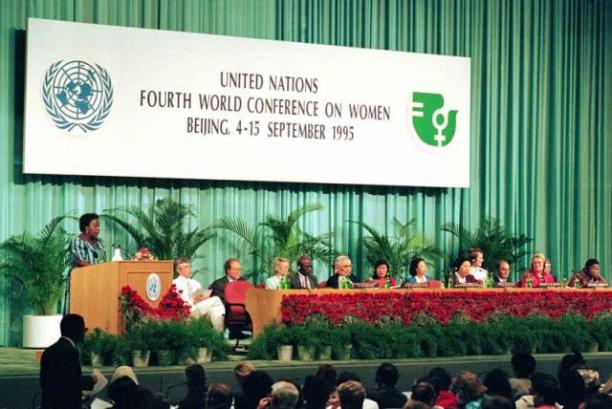
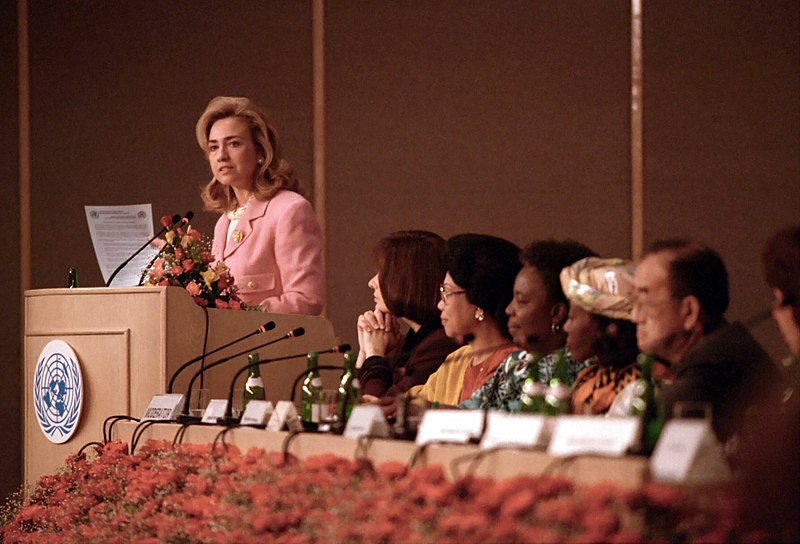
IV World Conference on Women in Beijing, 1995
These events triggered the formation of state policy on gender equality. It was in 1995 that the first governmental body, the Committee on Women, Motherhood and Childhood under the President of Ukraine, was formed, with its immediate task to monitor the status of women[5]. However, at that stage (the late 1990s), the discourse of ‘improvement of the status of women’, which had been established in the first years of independence, prevailed and offered fragmented activities, most often related to support for families and motherhood[6]. It was only at the beginning of the new millennium that the efforts of women’s NGOs and academic and expert communities revealed the understanding of gender inequality as a systematic pervasive defect of Ukrainian society, which can only be dealt with through comprehensive measures. 2001 was a watershed year of adoption of a new Family Code, the Law of Ukraine “On Prevention of Domestic Violence”[7] and the National Action Plan “On Improvement of Women Status and Promotion of Implementing Gender Equality in Society for 2001-2005”[8]. All of these documents were developed and actively lobbied for by women's NGOs.
The Emergence of Feminist Organisations
The second half of the 1990s witnessed the emergence of women's organisations with goals, focus, and activities that could be defined as entirely feminist. At the same time, there was a clear specialisation: some focused on the protection of women's rights (International Women's Human Rights Centre La Strada—Ukraine), others focused on the uprisal of women's consciousness and gender education (Women's Information and Consultative Centre), solving women's social and legal problems (“Women's Perspectives” West-Ukrainian Center, “Donna-Ukraine” NGO of women with disabilities) or the involvement of women in political participation (“League of Women Voters of Ukraine 50–50”). This process continued with the emergence of lesbian organisations (women's association “Sphere” Kharkiv and “Insight” NGO in Kyiv, etc.), societies of business and professional women (Vinnytsia Business Women Club and Business Ukrainian Women), and organisations aimed at the development of women’s leadership in a broader sense (“Successful Woman” Kherson Regional Centre) or overcoming gender patriarchal practices in the society (“Progressive Women” Vinnytsia Feminist Society).



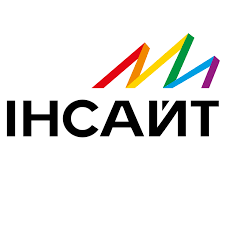
Funding the Women's Movement
The role of foreign donors in the formation of the women's movement in post-Soviet Ukraine was hotly debated and harshly criticized[9]. Since the 1990s, Ukrainian women's organisations have received support for their projects and initiatives from the Soros Foundation, UNDP, the MacArthur Foundation, Heinrich Boell Stiftung, the Network of East-West Women, MamaCash, the Global Fund for Women, Friedrich Ebert Stiftung, the Rosa Luxemburg Foundation, and others, including embassies of some countries that had specific programmes for the development of democracy and civil society in Ukraine (for example, the embassies of Canada, Switzerland, Sweden, and others). Since 2000, the Ukrainian Women's Fund has been operating. The organisation accumulates funds from a number of donor structures and distributes them on a competitive basis among NGOs to support the implementation of specific projects. In addition, the UWF has created and is updating a database of Ukrainian women's organisations, which encourages more effective cooperation between different groups.

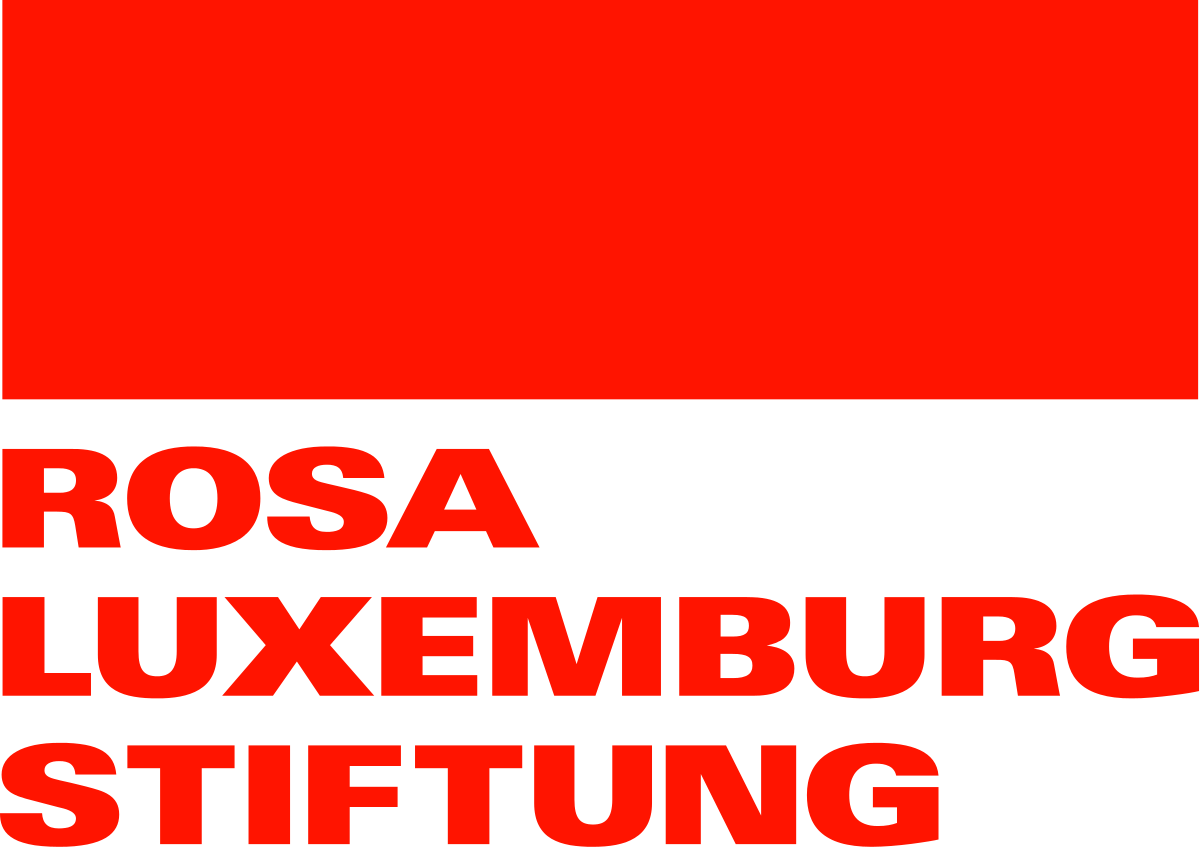

Other sources of support like state grants, charitable donations, and membership fees could not be a sustainable source of funding in the harsh economic conditions of the 1990s. The women's movement would have developed much slowlier and its impact would have been much weaker without this support from abroad, despite its numerous ‘side effects’ (such as encouraging competition between NGOs when resources were scarce which slowed down consolidation of the women's movement; consumerist and parasitic attitudes, opportunistic trends and ‘grant-eating’; adapting focus areas to match donor priorities, etc.). Although some consider the partial ‘professionalisation’ of women's activism (an NGO as the main activist’s workplace and source of income) absurd and even harmful, the Ukrainian economic reality does not offer any other way to ensure full functioning and effective activities of women's groups[10].
The Law of Ukraine “On Ensuring Equal Rights and Opportunities for Women and Men” and its Impact on Public Activity
The adoption in September 2005 of the Law of Ukraine “On Ensuring Equal Rights and Opportunities for Women and Men in Ukraine”, commonly known as the ‘law on gender equality’[11], was a breakthrough for women's organisations. While the Law declared gender equality as one of the priorities of state policy, the State Programme on Ensuring Gender Equality in Ukrainian Society up to 2010[12], which was adopted shortly afterward, defined mechanisms for its practical implementation, including a wider and more active involvement of NGOs in this process. These events provided a strong impetus for the activities of women's groups at all levels and in all focus areas by giving them wider opportunities thanks to the new normative documents.
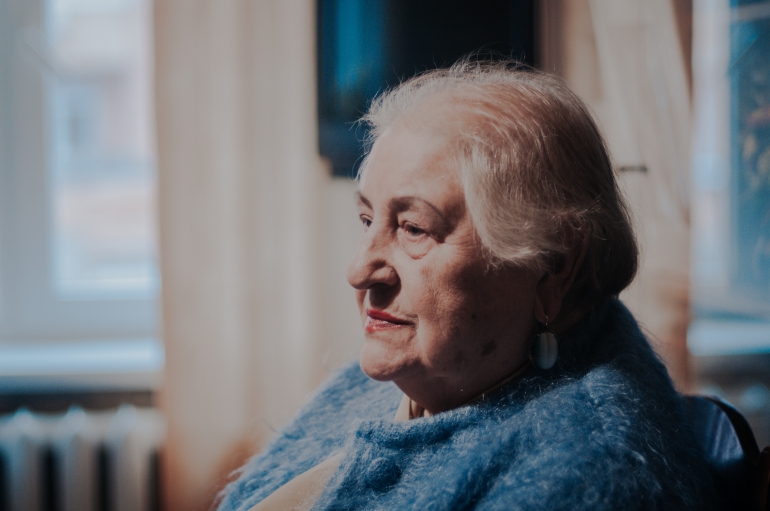
Tamara Melnyk
The institution of gender advisers under the heads of central and regional authorities[13] and the Expert Council on Gender Discrimination Appeals under the Ministry of Social Policy[14] became the tools to monitor state measures on promoting gender equality. The council included acknowledged public figures Kateryna Levchenko, Larysa Kobelyanska, Olena Suslova, and others. However, these institutions had only an advisory status with no real leverage.
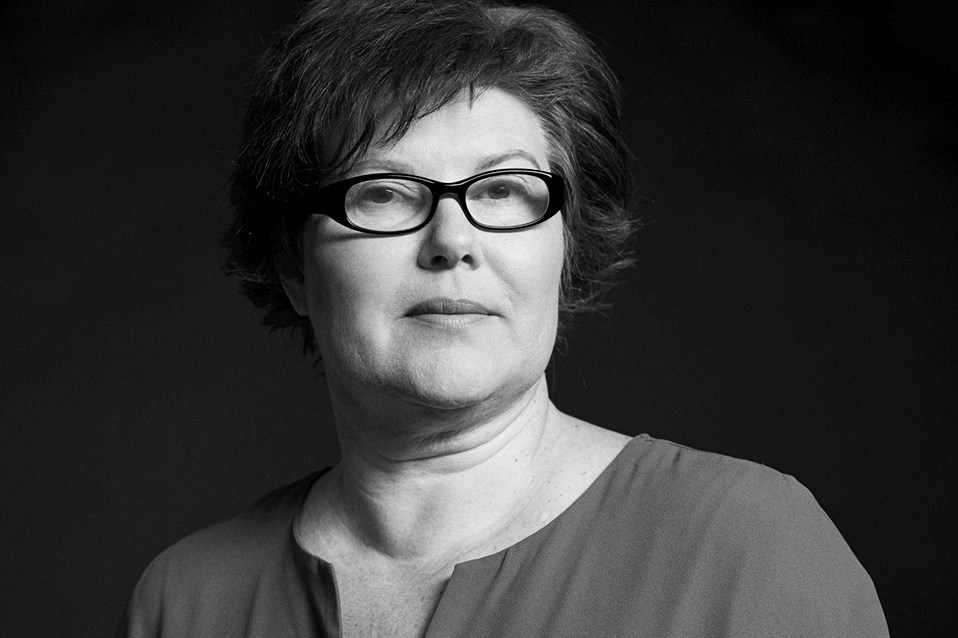
Kateryna Levchenko, Government Commissioner for Gender Equality Policy
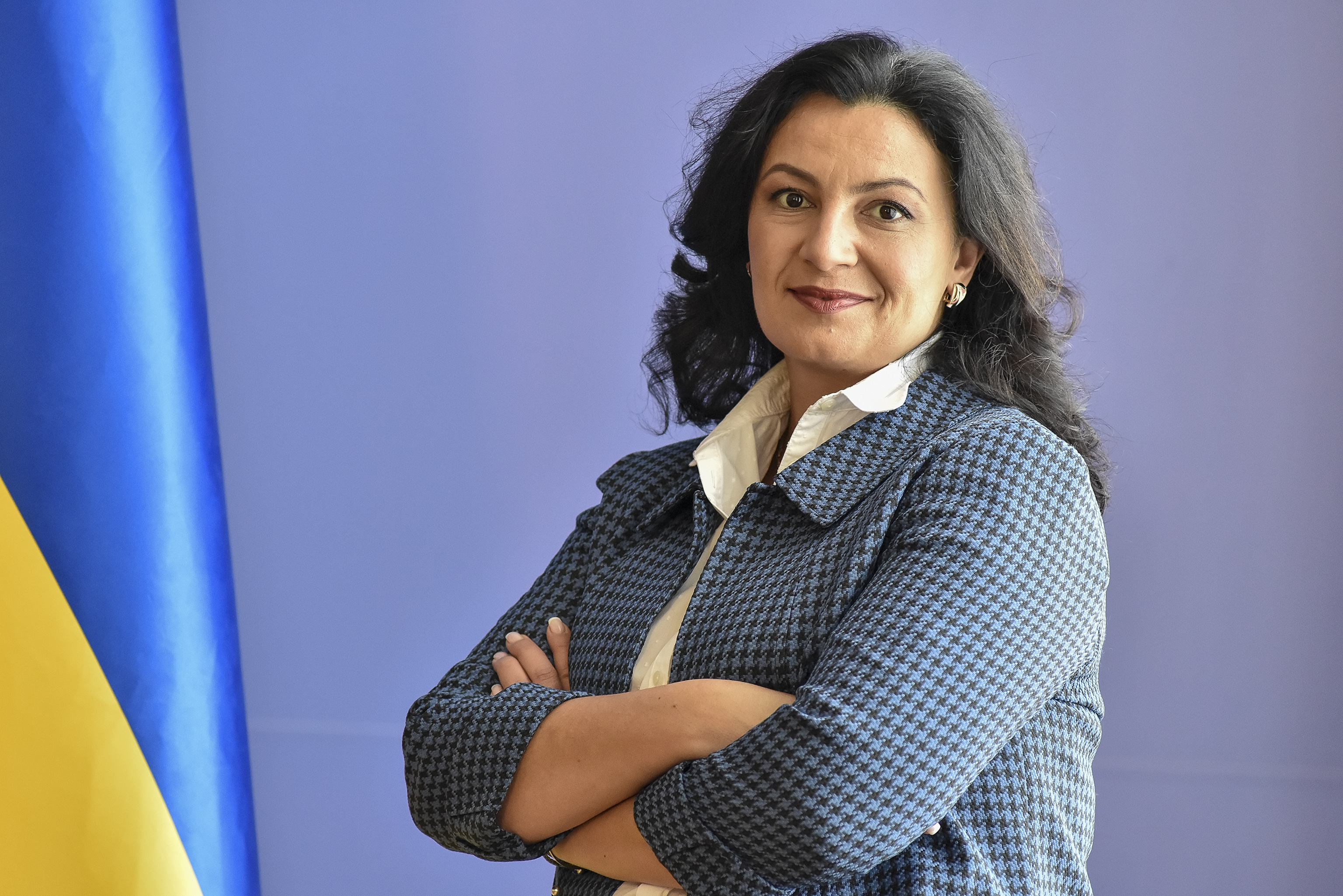
Ivanna Klympush-Tsintsadze, Deputy Prime Minister of Ukraine for European and Euro-Atlantic Integration
It was only in 2017 that for the first time in Ukraine's history, the government defined gender equality as one of its priorities and assigned responsibility for the implementation of state policy in this area to Deputy Prime Minister for European and Euro-Atlantic Integration Ivanna Klympush-Tsintsadze. In February 2018, Kateryna Levchenko, an experienced human rights activist was appointed as Government Commissioner for Gender Equality Policy by the Cabinet of Ministers of Ukraine[15].
Cooperation with the State: Pros and Cons
The cooperation with state authorities at all levels is typical for Ukrainian women's NGOs. Not only was the women's movement not in opposition to the government (although it often criticised its actions or passivity), but on the contrary, it actively looked for support for its initiatives. In turn, the Ukrainian state made a number of commitments towards the international community to overcome gender discrimination and therefore needed the actors who could ensure compliance with these obligations. Phrases like “with the support of the ministry…”, “with the assistance of the regional state administration…”, “in cooperation with the department…” and the like are usual for NGO reports. State patronage was often merely formal, but it was sufficient to overcome bureaucratic barriers and patriarchal prejudices. Ukraine was successful in sending reports to international institutions on activities to overcome discrimination against women and therefore was creating a positive image of a democratic state.
This seemingly mutually beneficial situation happened to pose serious risks for the women's movement. The main risk was that the state of Ukraine began to see its gender equality commitments as merely formal requirements. Despite the fact that the parliament and government pass laws, adopt programmes, and establish institutions (such as shelters for victims of domestic violence), in practice, they do not take financial or organisational responsibility for their full functioning and shove them onto society. On the other hand, the women's movement has also been affected by the long-term collaboration with the authorities. The women's movement has lost much of its revolutionary potential by adapting its focus areas and activities to the authorities (with their often extremely primitive understanding of gender equality). The introduction of ‘gender mainstreaming’ as a principle of state policy has demonstrated the dangers of state appropriation and corresponding modification of the idea of gender equality[16].
The Ukrainian state has been progressive in law-making. The adopted laws on prevention of domestic violence (2001), gender equality (2005), and combating human trafficking (2011) happened to be the first of that kind in Central and Eastern Europe[17]. At the same time, although Ukraine has held at least five parliamentary hearings on gender equality (1995, 2001, 2004, 2006, 2007), it would be a gross exaggeration to say that the state is consistent and systematic in promoting gender equality principles. A clear illustration is the adventures of gender quotas in electoral legislation and the rhetoric of male politicians on this subject.
The initiatives that contravene principles of gender non-discrimination which were previously proclaimed and embodied in law speak well on the lack of consensus among lawmakers and officials regarding gender equality. This refers to the notorious draft laws on ‘prohibition of abortion’[18] and ‘prohibition of propaganda of homosexuality"’[19]. Rare political forces manifest commitment to the principles of gender equality (Udar party at the level of programme documents and Samopomich party, which is the only one to have implemented gender quotas and receive additional state funding for this) [20].
In 2011, the “Equal Opportunities” inter-factional parliamentary group was established. Its representatives actively lobby for legislative changes aimed at eliminating gender discrimination and counteract sexism in Parliament [21]. At the same time, Pavel Unguryan, the chairman of the inter-factional parliamentary group “For Spirituality, Morality, and Health of Ukraine”, is an active ‘anti-genderist’. In February 2019, a new pro-conservative inter-factional group, “Women's Initiative for Family Values”, was formed.
As of March 2019, both deputy speakers of parliament, Iryna Herashchenko and Oksana Syroid, as well as ministers Ulana Suprun, Lilia Hrynevich, Oksana Markarova, Ivanna Klympush-Tsintsadze are active supporters of gender equality. The President of Ukraine Petro Poroshenko, who cultivates an image of a European democratic politician, regularly makes overtures to gender equality (in particular in his 8th of March addresses). In his speech at the II Ukrainian Women's Congress (December 2018), the president pointed out that the term ‘gender’ is being manipulated and called for putting all efforts into the ratification of the Council of Europe Convention on Preventing Violence against Women (the Istanbul Convention)[22]. However, two months later, the president, together with other high officials and politicians, attended the IV Ukrainian Family Forum, whose participants called for the elimination of the post of the Government Commissioner for Gender Equality Policy and opposing the ratification of the Istanbul Convention[23].

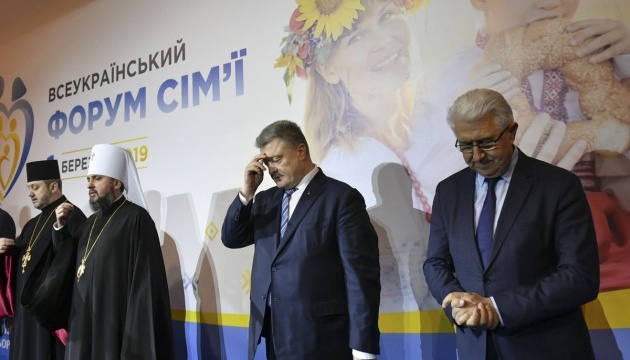
Such an ambivalent attitude makes it impossible for the state to be a reliable ally for civil society in ensuring women's rights are protected. Activists are aware of that and put pressure on state authorities, the media, and businesses to introduce the necessary changes. For example, both the capital’s and regional women's NGOs and academics have taken upon themselves the responsibility of educating journalists in order to change the situation with the coverage of gender issues in the media[24]. Heinrich Boell Foundation’s Kyiv Office (Ukraine) has published Gender for the Media, a manual for higher education institutions. The “Mass Information Institute” NGO monitors the topic of sexism in the media on a regular basis[25]. Thanks to those efforts acts of discrimination in all areas are not ignored by the media and are brought to the wider audience.
A separate area of significant activism and joint efforts of women's organisations across Ukraine has been the fight against sexism in advertising. The movement against the use of discriminatory images in advertisements started in Lviv in 2006, when the Lviv NGO “Research Center “Woman and Society” held its first public education campaign “Stop Sexism” at the Lviv Franko National University. Samples of city outdoor advertising were used to analyse the mechanisms of discrimination against women[26]. Since then, women’s NGOs have initiated various activities all around Ukraine (seminars, round tables, discussion clubs etc.) aimed at criticising sexist advertising and attempts to find a common understanding with the advertising industry[27]. This resulted in the establishment of the Industrial Gender Committee on Advertising in 2011, which “conducts an expert analysis of advertising checking for discrimination, (...) considers complaints from citizens regarding discriminatory content of advertising, and provides expert evaluation upon the request of government bodies. In particular, an IGCA representative is a member of the Expert Council for Counteracting Gender Discrimination within the Ministry of Social Policy of Ukraine”[28].
In the area of education, activists had to earn support from the Ministry of Education and Science in order to implement large-scale training for teachers[29]. The gender component has been crucial for EdCamp, an '(un)conference' for teachers, which is a grassroots form of teachers’ self-organisation and self-education. These efforts delivered results. In 2017, the MES of Ukraine conducted an anti-discrimination content analysis of school textbooks, in particular regarding their compliance with the principles of gender equality, which revealed numerous violations[30]. The principle of non-discrimination was included in the new version of the Law of Ukraine on Education (2017).
Euromaidan as a Catalyst of Social Changes
The Euromaidan Revolution gave a big boost to all social movements, including feminist ones. Although nationalistic discourse quickly took over the Euromaidan space (including its inherent patriarchal ideas which make a clear distinction between the roles of men and women[31]), liberal ideas and values were at the heart of the mass protests from autumn 2013 till winter 2014. The participation of women was sizeable, visible and self-organised (“women’s hundreds”, a “hundred” referring to squads of 100)[32]. Three women became heroes of the Heavenly Hundred. Over one hundred women of different ages were wounded during February Euromaidan events.
Finally, women's participation in the Revolution of Dignity attracted the attention of journalists, who actively highlighted the female faces of the protest in their publications[33]. According to gender monitoring by the Institute of Mass Information, it was during Euromaidan that women's presence in the media increased markedly: they were much more often in the focus of stories, invited as guest experts, and were in the centre of discussions[34]. Thousands of women gained experience in social activism as volunteers and later founded NGOs and became members of local councils and the Verkhovna Rada of Ukraine. Prominent examples of women volunteers' rapid political careers are Minister Ulana Suprun and politician Tetiana Rychkova.
During the twentieth century, wars have not only brought suffering and loss to women in different countries but have also opened up new opportunities for self-fulfilment[35]. This was also the case in Ukraine during the armed conflict in Donbas. From the very beginning of the ATO (anti-terrorist operation), many women (primarily from those amongst active participants of the Euromaidan Revolution) decided to join the volunteer battalions in order to defend their country. However, women in the army faced open discrimination: both due to widespread conservative gender stereotypes and prejudices and at the institutional level[36]. One of the most painful problems was the restriction on the positions that women could occupy in the armed forces: according to the law, women were eligible for only non-combat military jobs[37]. As a consequence, women combatants were enlisted in military service as auxiliary service personnel, were less paid, and were deprived of social benefits ATO veterans receive. This problem was in the focus of a protest called the “Invisible Battalion” organised by activists, human rights advocates and female ATO veterans on January 21, 2016 at the walls of the Ministry of Defence. The protesters sought to draw the attention of the commanders of the Armed Forces of Ukraine (AFU) to the discrimination of women participants of the ATO and demanded from the Ministry of Defence to repeal decree No. 337, which prohibited the enlisting of women into military service as soldiers and officers in military units of the ATO.
The activists' efforts were not in vain: in March 2018, the notorious decree was amended to make full service for women in the army possible[38]. It was soon on September 6, 2018, that the Verkhovna Rada of Ukraine adopted amendments to legislation that eliminated discriminatory (against women) norms in the AFU[39]. On the same day, a crowded demonstration of female activists and female MPs took place by the walls of parliament to support 50% representation of women in the parliament. They used quite feminist slogans: “Women in power! Women in the Rada!”[40]. This victory of the feminists was preceded by the repeal of a decree that prohibited women in Ukraine from a list of almost 450 professions[41].
Countering Gender Equality
In recent years the growing interest in feminism is quite visible. The weekly number of events that are announced on the Gender in Detail website (on Mondays in the News section) is a clear illustration of it: presentations, public lectures, discussions, conferences, trainings, tours and exhibitions on women's issues take place in all regions of the country on a regular basis. Among the most remarkable events were the public lecture series “The Level of Feminism” (July 2015 and March 2017), and the interview series, exhibition and lecture series “Fearless: They Create Feminism in Ukraine” (March-April 2019) in Kyiv.
Along with advocates of gender equality, its worst opponents from the most conservative circles have also become more active. It is the maturity and influence of the social forces that defend the principles of gender equality and the strengthening of the corresponding legal framework that triggered attacks from conservatives.
The polemics go beyond a civilised debate. The ‘warfare’ of opponents of gender equality began in late 2009 with a campaign to discredit the very concepts of ‘gender’ and ‘gender policy’. An active propaganda campaign throughout 2010 included street actions, booklets; smear campaigns in public transport, public places, and residential buildings; publications in the media, attempts to influence education workers and regional politicians and officials. It is worth noting that these activities were often anonymous.
They used direct disinformation, manipulated the public opinion of people poorly informed about gender issues and played on their national and religious feelings and homophobic prejudices. Gender policy was presented to society only as something aimed at promoting and imposing ‘homosexuality’ and undermining the institution of the traditional family in Ukraine [42].
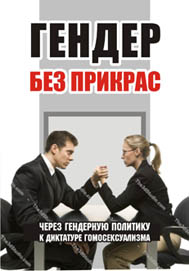
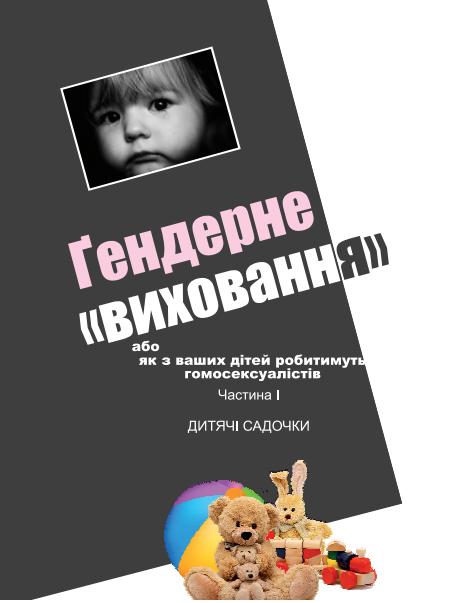
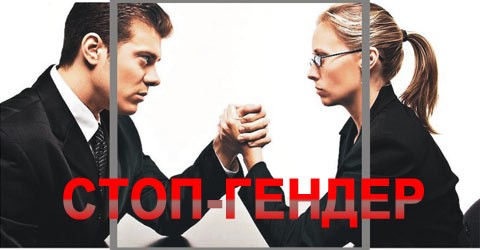
The state authorities should have responded to this situation since gender equality is a principle of state policy enshrined in numerous legal documents. Instead, representatives of right-wing parties (for example, “Svoboda” All-Ukrainian Union), who have a majority in certain city and regional councils in Western Ukraine, even managed in their sessions to adopt appeals to the parliament and the government of Ukraine to turn away from gender policy[43]. The anti-gender bacchanalia, which calmed down somewhat in 2012, heated up again after the Revolution of Dignity, when radicals disrupted a number of feminist protests in various cities while female activists experienced brutal attacks, and physical and psychological violence [44].
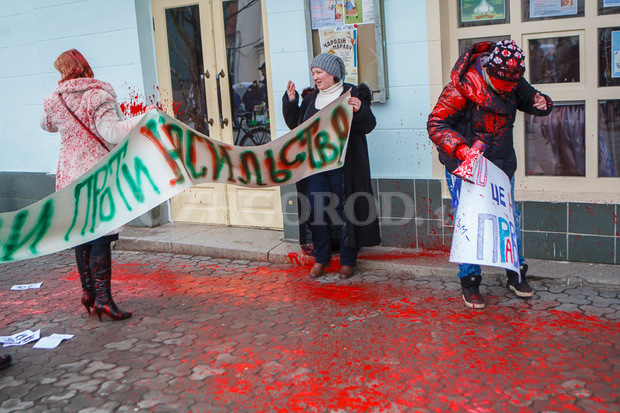
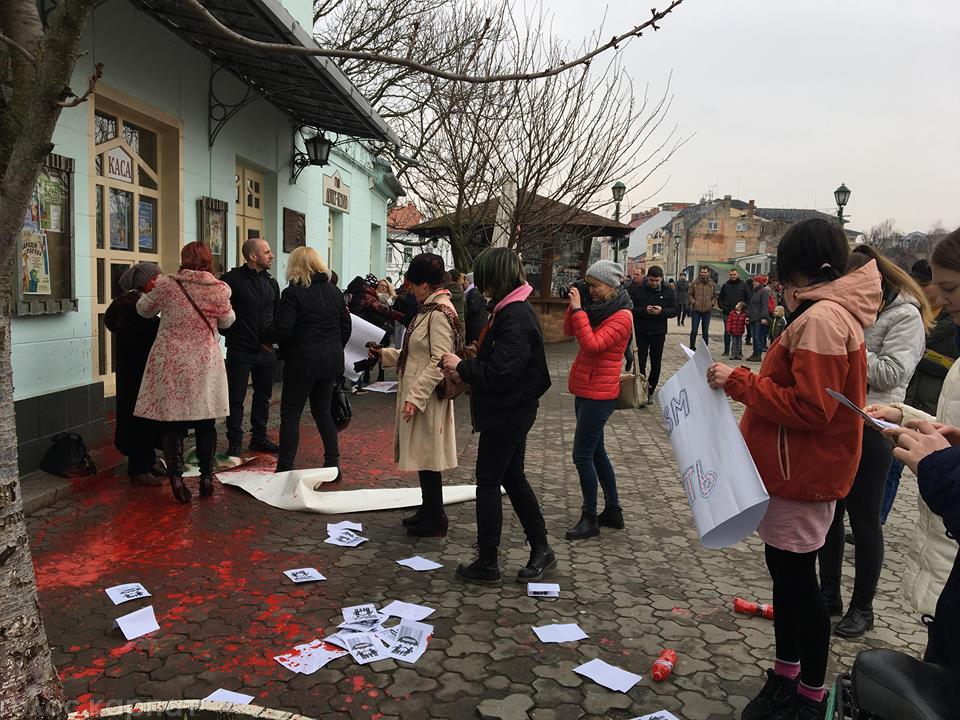
Participants of the march for women's rights In Uzhhorod were splashed with red paint
Law enforcement authorities did not always confront aggressors and punish them properly.
The confrontation was clearly manifested during the process of ratification by the Verkhovna Rada of the Council of Europe Convention on preventing and combating violence against women and domestic violence (2011), better known as the Istanbul Convention [45]. At first, under pressure from conservative MPs, the terms ‘gender’ and ‘sexual orientation’ were removed from the draft law. Despite expert explanations, the Ukrainian Council of Churches, guided by a misinterpretation of the concept of ‘gender’ [46], urged lawmakers not to ratify the document at all, claiming that it posed a threat to public morality and contradicted Christian values [47]. The difficult compromise resulted in the adoption of the Law of Ukraine “On Preventing and Combating Domestic Violence” and a number of amendments to the Criminal Code and the Criminal Procedure Code of Ukraine, which increased responsibility for violence against women [48]. The ratification of the Istanbul Convention and the further accession to the European monitoring system on compliance with combating domestic violence remain questionable.
At the end of 2018, the influential Turchynov couple distinguished themselves with loud anti-gender statements. Hanna Turchynova, a professor at the National Drahomanov Pedagogical University, spoke against the anti-discrimination expertise of textbooks and called the gender policy ‘homodictatorship’[49]. Her husband Oleksandr Turchynov, the Secretary of the National Security and Defence Council of Ukraine, echoed her statements having also connected gender issues to ‘neo-Marxism’[50]. At the initiative of conservative politicians, the IV All-Ukrainian Family Forum was held on March 1, 2019. Its participants called for the elimination of the post of Government Commissioner for Gender Equality Policy and for opposing the ratification of the Istanbul Convention. For the first time, the forum was attended by top-level politicians, including Petro Poroshenko, Yulia Tymoshenko, Arseniy Avakov, and others[51]. According to the forum organisers, its preparation included 16 regional family forums; 66 councils of various levels (including 12 regional councils) addressed the President of Ukraine, the Cabinet of Ministers, and the Verkhovna Rada, demanding “to protect family interests” (in fact, they demanded to oppose gender policy); “Pro-family” marches took place in 60 cities. Therefore, the strengthened local women's movement faces increasingly aggressive attacks on the values and achievements of gender equality in Ukraine.
Translated from Ukrainian by Iryna Malishevska.
[1] Hrycak, Alexandra. From Mothers’ Rights to Equal Rights: Post-Soviet Grassroots Women’s Associations // Women’s Community Activism and Globalization: Linking the Local and Global for Social Change / Eds. N. Naples, M. K. Desai. — New York, London, 2002. — P. 68.
[2] To discover proves in the excerpts of charters and programme documents refer to: Кісь, Оксана. Моделі конструювання ґендерної ідентичности жінки в сучасній Україні // Незалежний культурологічний часопис «Ї». — 2003. — Вип. 27 (www.ji.lviv.ua).
[3] For more details refer to: Кісь, Оксана. Кого оберігає Берегиня, або Матріархат як чоловічий винахід // Журнал «Я». — 2006. — № 4. — С. 11–16 (www.krona.org.ua/).
[4] For more details refer to: Hrycak, Alexandra. Transnational Advocacy Campaigns and Domestic Violence Prevention in Ukraine // Domestic Violence in Postcommunist States / Ed. K. Fabian. — Bloomington, 2010. — P. 45–77.
[5] Decree of the President of Ukraine “On Regulations of the Committee on Women, Motherhood and Childhood” of December 4, 2006 // http://zakon2.rada.gov.ua
[6] Resolution of the Cabinet of Ministers of Ukraine “On the Long-term Programme on the Improvement of the Status of Women, Families, the Protection of Mothers and Children” of July 28, 1992 // http://zakon2.rada.gov.ua; Resolution of the Cabinet of Ministers of Ukraine “On Approval of National Action Plan on Improvement of Women Status and Promotion their Role in Society for 1997-2000” of September 8, 1997 // http://zakon1.rada.gov.ua
[7] Law of Ukraine “On Prevention of Domestic Violence” of November 15, 2001 // http://zakon2.rada.gov.ua
[8] Resolution of the Cabinet of Ministers of Ukraine “On National Action Plan on Improvement of Women Status and Promotion of Implementing Gender Equality in Society for 2001-2005” of May 6, 2001 // http://zakon1.rada.gov.ua/
[9] This problem is relevant to the women’s movement in all post-Soviet countries, refer to: Kay, Rebekka. Pot of Gold or Poisoned Chalice? The Impact of Western ‘Support’ // Kay, Rebekka. Russian Women and Their Organizations: Gender, Discrimination and Grassroots Women’s Organizations, 1991–1996. — New York, London, 2000. — P. 187–209.
[10] So-called ‘professional feminists’ were harshly criticised by Alexandra Hrycak, see: Hrycak, Alexandra. Foundation Feminism and the Articulation of Hybrid Feminisms in Post-Socialist Ukraine // East European Politics and Societies. — 2006. — Vol. 20. — № 1. — Р. 69–100.
[11] Law of Ukraine “On Ensuring Equal Rights and Opportunities for Women and Men in Ukraine” of September 8, 2005 // http://zakon2.rada.gov.ua
[12] Resolution of the Cabinet of Ministers of Ukraine “On Approval of State Programme on Ensuring Gender Equality in Ukrainian Society up to 2010” of December 27, 2006 // http://zakon2.rada.gov.ua
[13] Засади створення інституту радників з гендерних питань // Міністерство юстиції України (http://old.minjust.gov.ua). To learn about this and other mechanisms of influence refer to: Організаційні та правові елементи інституційного механізму забезпечення гендерної рівності в Україні. — Запоріжжя, 2011.
[14] Про Експертну раду з питань розгляду звернень за фактами дискримінації за ознакою статі // Закон и норматив (www.zakon-i-normativ.info).
[15] Призначено Урядову уповноважену з питань гендерної політики // www.kmu.gov.ua. — 2018. — 14 лютого. To learn about Kateryna Levchenko’s current activities refer to the official Facebook page of the Government Commissioner for Gender Equality Policy.
[16] For more details refer to: Hankivsky Olena, Salnykova Anastasiya. Gender Mainstreaming in Post-Soviet Ukraine: Application and Applicability // Journal of Communist Studies and Transition Politics. — 2010. — Vol. 26. — № 3. — Р. 315–340. Olga Plakhotnik analyses the same problem in the context of gender studies development, refer to: Плахотнік, Ольга. Неймовірні пригоди ґендерної теорії в Україні // Критика. — 2011. — № 9/10. — С. 17–21.
[17] The Law of Ukraine “On Combating Human Trafficking” of September 20, 2011 // http://zakon2.rada.gov.ua
[18] The draft law “On Amendments to Several Legislative Acts of Ukraine concerning the termination of pregnancy (abortion)” of March 27, 2012 // w1.c1.rada.gov.ua
[19] The draft law “On Amendments to Several Legislative Acts of Ukraine concerning the Protection of Rights of Children to Safe Spaces Online” of June 20, 2011 // w1.c1.rada.gov.ua
[20] For more details see: Kis, Oksana. Feminism in Contemporary Ukraine: From “Allergy” to Last Hope // Kultura Enter. — Lublin, 2013. — Vol. 3. — Р. 264–277.
[21] У Верховній Раді України створено міжфракційне депутатське об’єднання «Рівні можливості» // Верховна Рада України. — 2011. — 25 грудня: http://iportal.rada.gov.ua; МФО «Рівні можливості» / Equal Opportunities Caucus на www.facebook.com
[22] - https://povaha.org.ua/scho-poroshenko-hrojsman-ta-heraschenko-dumayut-pro-hendernu-rivnist-v-ukrajini/
[23] https://censor.net.ua/ua/p3114428
[24] For example, since 2007 Gender Information and Analytics Centre KRONA has conducted a series of trainings and workshops for journalists in different regions of Ukraine, developed and published several guidelines for journalists Gender View (http://krona.org.ua). In 2017–2018 Volyn press club implemented an All-Ukrainian project “The Gender Space of Today’s Journalism: Theory to Practice” which included a series of regional trainings for journalists and publication of a guideline, see: Гендерна чутливість українських медіа: Порадник / Ред. Б. Стельмах, О. Ярош. — Луцьк, 2018. The Women's Consortium of Ukraine (http://wcu-network.org.ua) has devoted much effort to and conducted events aimed at educating media workers concerning problems of sexism in the media and advertising.
[26] Core messages are presented in the article: О.Кісь. Обережно: сексизм! // Дзеркало тижня. 6 червня 2008 https://dt.ua/SOCIETY/oberezhno_seksizm.html
[27] For example, a series of such events were held by the Women's Consortium of Ukraine in 2008-2009 http://wcu-network.org.ua/ua/possessing-equal-rights/article/zhinochiy_konsorcium_ukrayini_u_protidiyi_seksizmu_v_ukrayinskiy_rek
[28] The Industrial Gender Committee on Advertising http://uam.in.ua/gkr/ukr/
[29] A large-scale training project for school teachers was implemented with UNDP financial support in 2009–2011. In addition, regional seminars and other educational events for school teachers were conducted. As a follow-up, several study guides for education workers were published, see: Марущенко Олег, Плахотнік Ольга. Гендерні шкільні історії. — Х., 2012; Як навчати школярів долати гендерні стереотипи: Конспекти занять: Навчально-методич. посіб. для загальноосвіт. навч. закладів / Ред. Т. Говорун. — К., 2011.
[30] Висновки антидискримінаційної експертизи // Інститут модернізації змісту освіти (https://imzo.gov.ua); МОН пояснює, для чого потрібна антидискримінаційна експертиза підручників // www.kmu.gov.ua. — 2018. — 8 червня.
[31] See: Бурейчак Тетяна, Петренко Олена. Канапки, Січ та «бандерівки» // https://zaxid.net. — 2014. — 8 січня.
[32] See: Марценюк, Тамара. Ґендерна соціологія Майдану: роль жінок у протестах // http://ekmair.ukma.edu.ua
[33] For example: Виртосу, Ірина. Майдан — жіноча справа: 17 героїнь. — К., 2014; Дідула Петро, Онишко Оля. Жіночі обличчя майдану: серія документальних фільмів // http://uamoderna.com
[34] Кабачій, Роман. Жіночі обличчя революції // http://tyzhden.ua. — 2014. — 28 лютого.
[35] See: Кісь, Оксана. Жіночі обличчя війни: ключові теми і підходи в західній феміністській історіографії // Жінки Центрально-Східної Європи у часи Другої світової війни: гендерна специфіка досвіду в часи екстремального насильства / Ред. Гелінада Грінченко, Катерина Кобченко, Оксана Кісь. — К., 2015. — С. 15–39.
[36] “Invisible Battalion”, a sociological research on women’s participation in ATO military operations in Ukraine, presented its findings at the end of 2015: Невидимий батальйон: соціологічне дослідження / Ред. Тамара Марценюк. — К., 2016.
[37] Resolution of the Cabinet of Ministers of Ukraine “On Approving Specialties for which Women with Appropriate Training Can be Taken to the Military Service” of October 14, 1994 // http://zakon4.rada.gov.ua
[38] Decree of the Ministry of Defence of Ukraine “On Amendments to the Decree of the Ministry of Defence of Ukraine № 337 of May 27, 2014” № 111 of 12.03.2018 // http://zakon0.rada.gov.ua
[39] Верховна Рада ухвалила зміни до законів України щодо забезпечення рівних прав і можливостей жінок і чоловіків в армії // www.mil.gov.ua. — 2018. — 6 вересня.
[40] Акція «Жінок в парламент — 50 %» // www.facebook.com. — 2018. — 6 вересня.
[41] Decree of Ministry of Education and Science of Ukraine № 1254 “Concerning the Obsolescence of the Decree of the Ministry of Health of Ukraine № 256 of December 29, 1993” of October 13, 2017 // http://zakon2.rada.gov.ua
[42] For more details refer to a special issue Gender and Anti-gender of “Ya” Journal. — 2013. — № 34 (http://krona.org.ua). For the most impressive examples of propaganda of the anti-gender campaign refer to: http://stopgender.wordpress.com. Opponents of the gender policy responsible for its active discredit prefer to remain anonymous: they do not disclose any names, addresses or other details that would help to identify those behind the anti-gender campaign and to determine who provides it with financial, organisational, and intellectual support.
[43] To see the relevant appeals refer to the following resources: Любовь против гомосексуализма (http://love-contra.org); Франківська міськрада вимагає заборонити пропаганду гомосексуалізму в Україні // https://kurs.if.ua. — 2017. — 15 грудня.
[44] Чому жіночі акції Восьмого березня зіштовхнулись із насиллям // https://socportal.info. — 2018. — 10 березня; В Івано-Франківську праворадикали зірвали лекцію про фемінітиви // https://humanrights.org.ua/material. — 2018. — 18 березня; Праворадикали в Ужгороді зірвали акцію на підтримку прав жінок та за ратифікацію Стамбульської конвенції // https://zaholovok.com.ua. — 2017. — 8 березня; Правозахисники вимагають розслідувати у Львові напад на феміністок // https://dailylviv.com. — 2018. — 9 березня.
[45] See: Виртосу, Ірина. Усе, що ви хотіли знати про Стамбульську конвенцію // https://humanrights.org.ua. — 2017. — 11 травня.
[46] See: Суслова, Олена. До деяких положень законопроектів з пакету ратифікації Стамбульської конвенції Ради Європи // http://radaprogram.org. — 2017. — 1 грудня.
[47] Рада Церков закликає депутатів не ратифіковувати Стамбульську Конвенцію // http://vrciro.org.ua. — 2017. — 22 червня.
[48] Law of Ukraine “On Preventing and Combating Domestic Violence” of December 7, 2017 // http://zakon5.rada.gov.ua; Law of Ukraine “On the Amendments to the Criminal and Criminal Procedure Codes of Ukraine in order to implement the provisions of the Council of Europe Convention on Preventing and Combating Violence against Women and Domestic Violence” of December 6, 2017 // http://zakon3.rada.gov.ua; Хоменко, Святослав. Б’є — значить сяде: Україна отримала нові закони проти сімейного насильства // https://www.bbc.com. — 2018. — 4 січня.
[49] https://censor.net.ua/blogs/3095835/gomodiktatura_chastina_3_rozbeschennya_dteyi_cherez_pdruchniki
[50] https://lb.ua/news/2018/12/11/414681_neomarksizm_abo_podorozh_bezodnyu.html?fbclid=IwAR2jD-BloMops6tpZyhYfWCAAhEzw4DE80xgKcXTLDlHaCEvHOLlXPohskk
